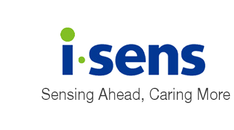Getting the Right Support After a Type 1 Diabetes Diagnosis
A diagnosis of type 1 diabetes (T1D) can be life-changing, requiring new routines, medical management, and lifestyle adjustments. While self-management...
Shop today >> Free Shipping for orders $99 and up
i-SENS USA
3545 Lomita Blvd Unit D, Torrance, CA 90505
i-sens-usa@i-sens.com
